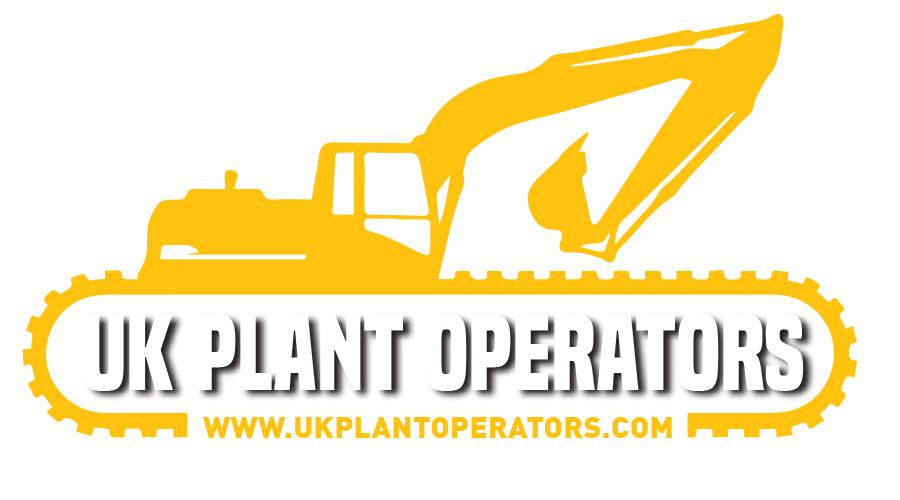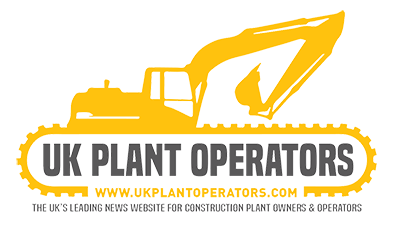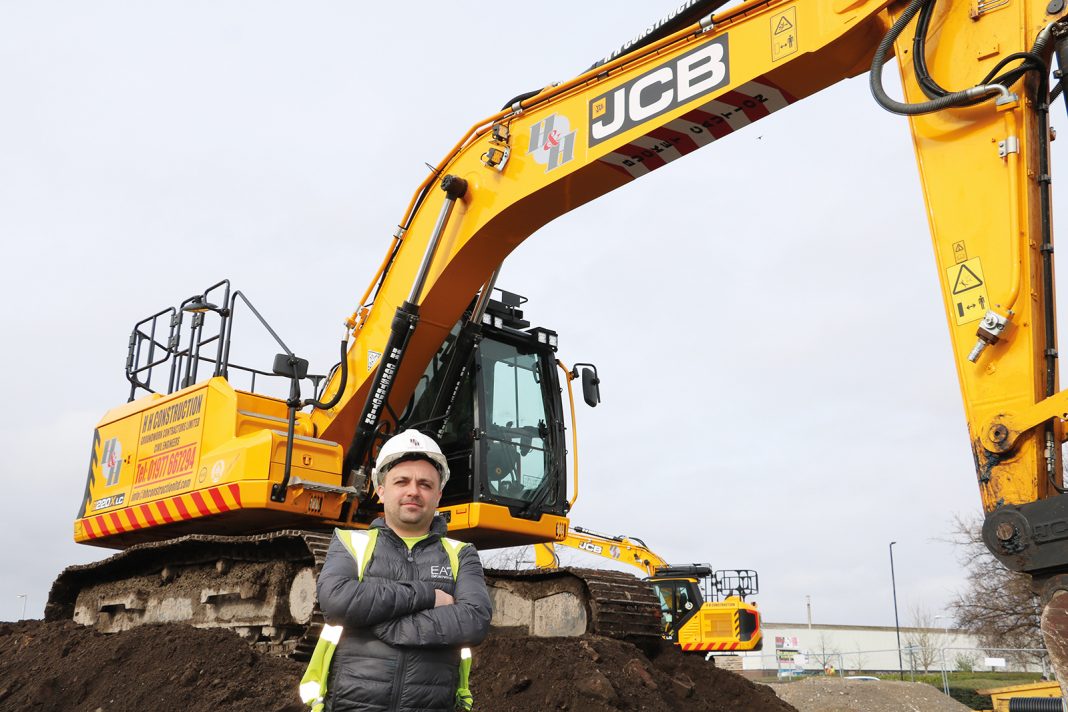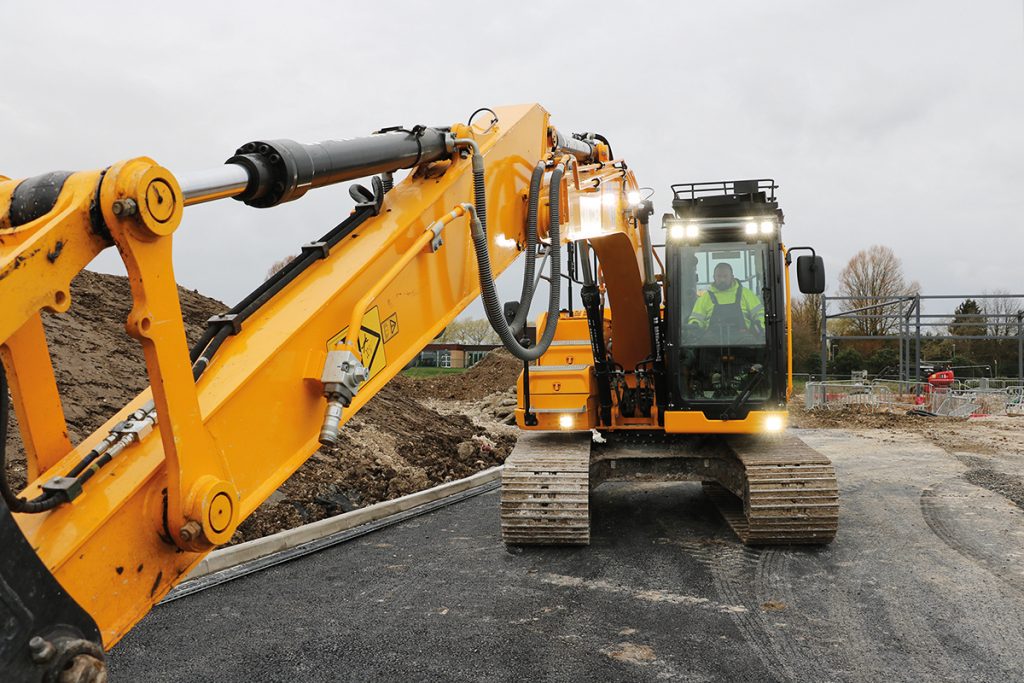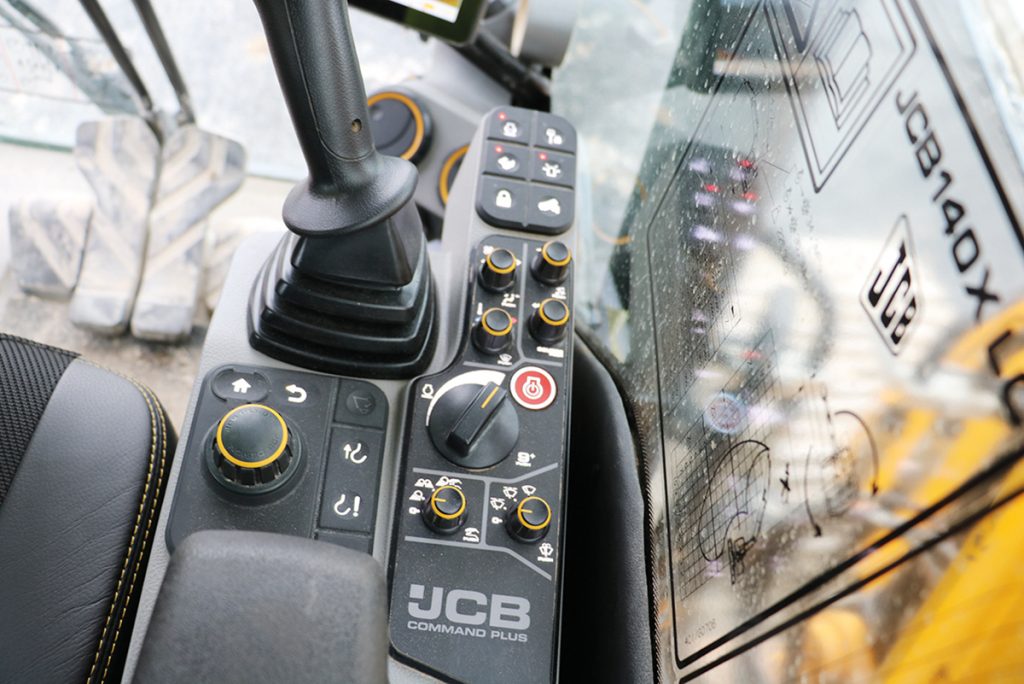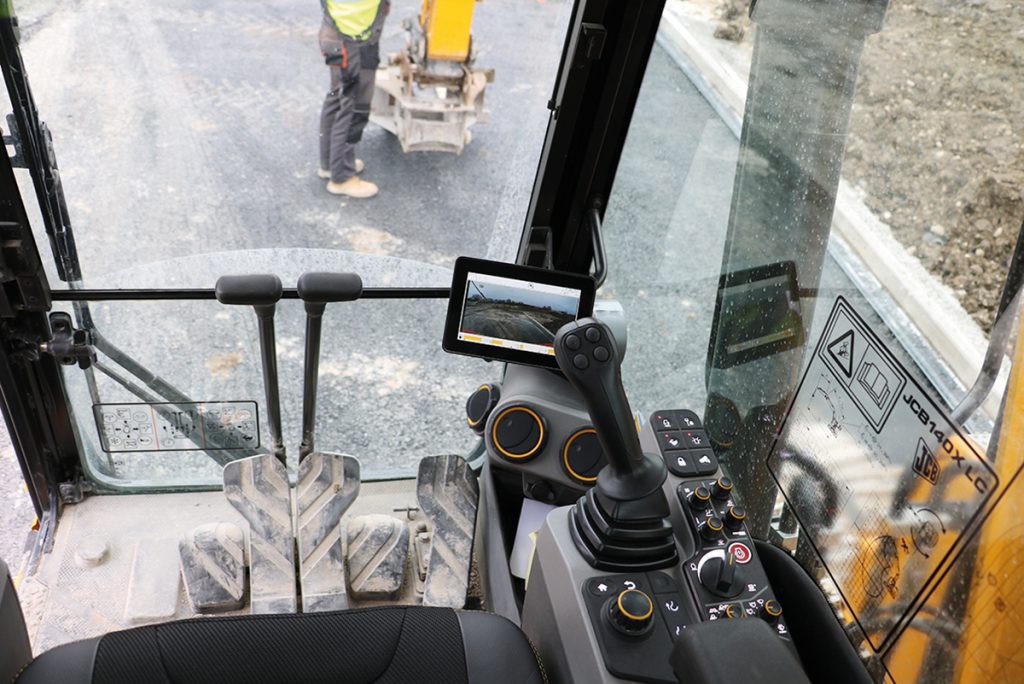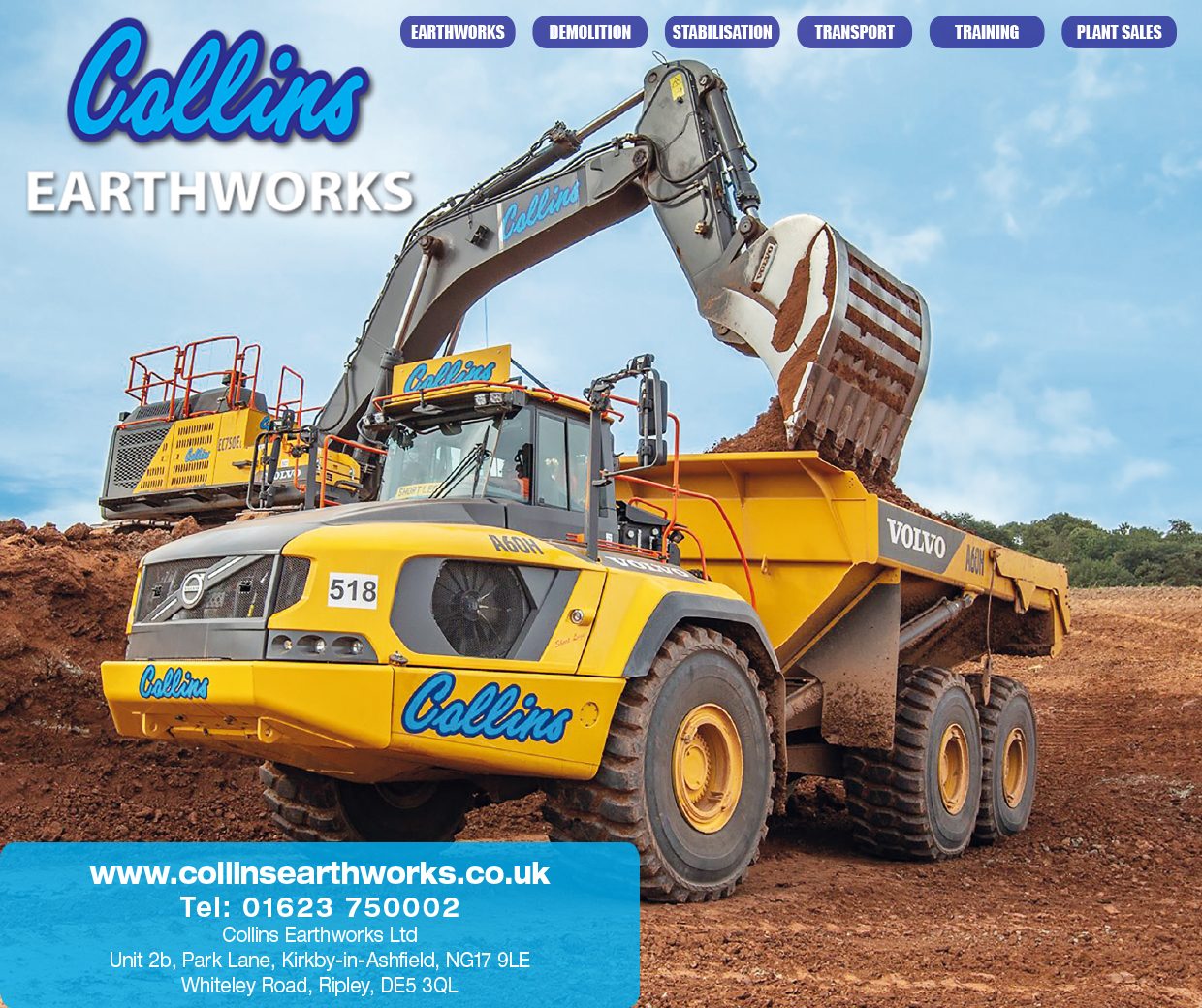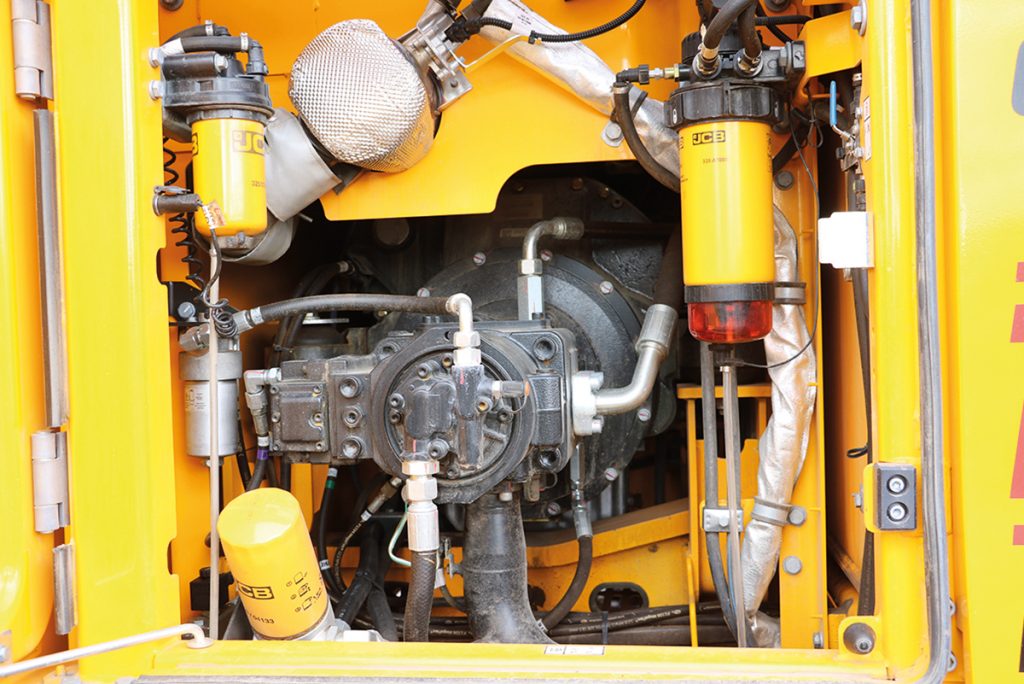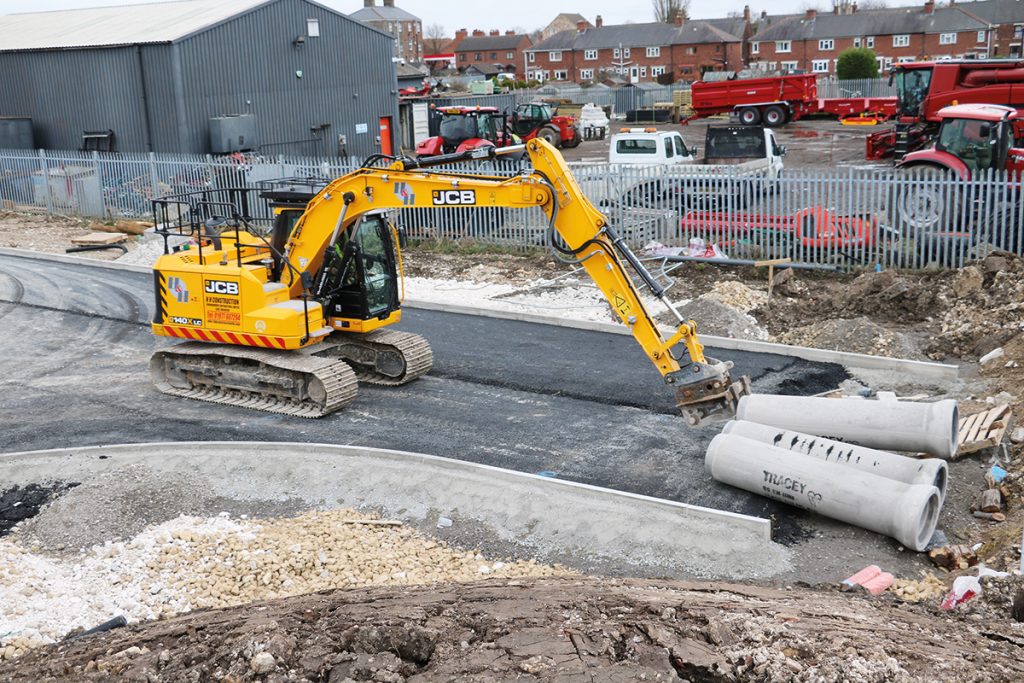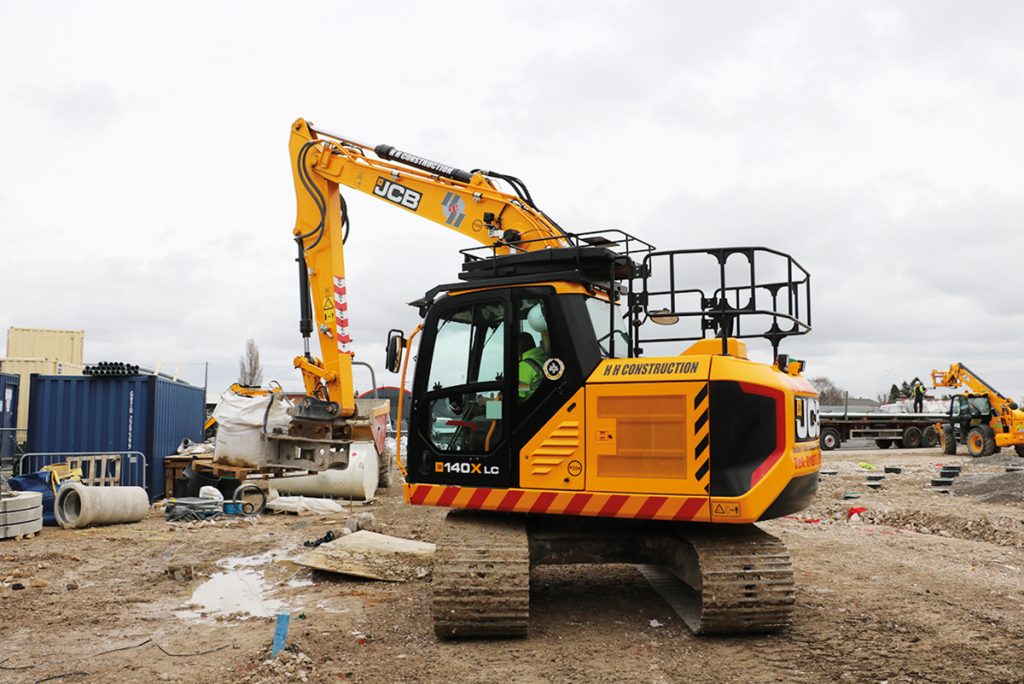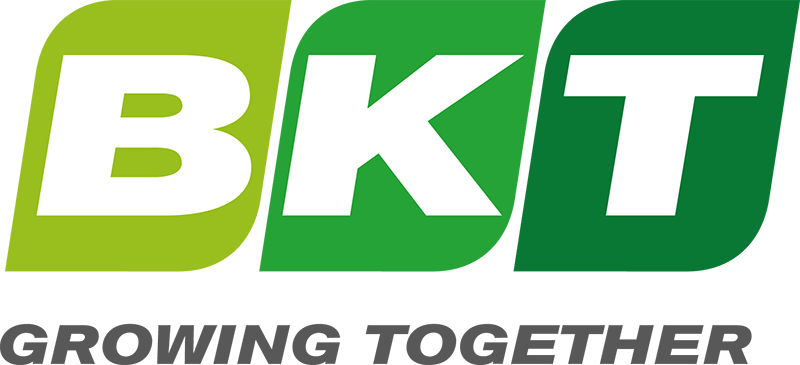![]()
A large grounds working contractor has invested heavily with their JCB X-series excavators. To see some of their machines in action and to talk to their operators, Darren Scully visited some sites.
The X-series range of excavators was first launched in 2018 with the 220X. Last March this machine was followed up with the 131X, 140X and the 150X models. An interesting statistic is that over 60% of all tracked excavators sold in the UK is in the 13-16 tonne range. This is the preferred size for the majority of ground workers as they are quite simply the workhorse of the building site, digging footings, pouring concrete, grading hardcore or gravel and laying asphalt. It is no surprise then, that Castleford based contractor, H&H Construction have bought several JCB 220’s and 140’s X-series machines to add to their already growing fleet. I wanted to visit some of the sites they are working on and get a closer view of how the operators use them and most importantly to see what they think of them. My first port of call was to Altrincham, where H&H construction were doing the ground works for a new supermarket.
What they do
Before we delve into what the guys are doing on the site, first a little history about H&H construction. The company was founded by John and Susan Handforth in 2006 to work on projects that involved groundworks, drainage systems, earthworks, utilities, bulk excavations, concrete foundations and floor slabs. It has grown steadily over the years and is now carrying out works for many well-known retail providers. On this site today I am joined by one of their first employees, Adam Gant, who is a site supervisor for H&H construction. I ask Adam to expand on their current fleet size. “We have about thirty machines in the fleet now. Most of our equipment in JCB, especially all the 360 excavators.
We have JCB telehandlers and rollers, they guys are really familiar with them and give us very little trouble” he said. The machines on this new site for an Aldi supermarket are a 220x and a 140x. The one thing that I notice very quickly is there is names on the doors of the machines. The 220x has the name ‘little legs’ stencilled on the side of the machine.
I ask Adam why and what is that for? “Oh, you see we assign our operators to our machines on a full-time basis, it is their machine, so we like to put their names on the side, it gives that personal touch. The lads quite like it”. At this moment in time, there is no operator in the machine because he is on his morning tea break. I am still trying to figure out why the operator is called little legs, but soon he appears and then the penny drops. The operator is shall we say, vertically challenged, a good horse jockey size, and this is why I love the plant industry. It is an industry that has not been consumed by political correctness, and the operator himself says it is only for a laugh and he jokes about it all the time.
Little legs and sound diggers
The operator of the JCB 220X is Jordan Anderson, AKA, Little Legs. He hails from the great city of Leeds and has been on the levers now for fifteen years. His first machine was a Takeuchi mini digger. Even when he says that, he follows it up with ‘it would be obvious they would start me on a mini-digger’ we both burst out laughing. He is now working for H&H for eleven years and really enjoys it. His first machine with H&H was a Daewoo 14 tonner. He is currently on his 220X for the past one thousand hours, so he has it well broken in. I ask him for his honest opinion of the machine so far.
“It is a sound digger. I really like the cab, loads of room and the seat is really comfy. The mod-cons are great, such as blue tooth and the levers are really light and precise. It is very responsive on the dig and it is just an all-round solid machine. I think they have made a massive improvement with this model compared to the JS models. Lots more power and better hydraulics. I like the boxing ring up on the deck. I have the digger switched on to power plus mode all the time and the fuel burn is good. I would get about two ten-hour days flat out from a full tank” said Jordan. I must ask him about the nicknames on the side of the machines and how that all started. “Well they used to call me Frankie, after Frankie Dettori the famous jockey, and then they changed it to little legs. I suppose I would have been a perfect US Navy fighter pilot with a call sign like that. The banter and bit of fun with the lads is what I really like about this job. John organised the names on the side and we all love all the names. It is like a big family here” smiled Jordan.
You need to make a bigger one
Now I move on to Nottingham to see another Job for Aldi that H&H are currently completing. On this site is the 140X and an older JS300. The lads are busy digging out and loading wagons. I get a chance to speak with the operator of the JS300, Barry Holt. He is a man with plenty of experience of operating excavators, starting out when he was fifteen years old some forty years ago. His total machine experience would mean he has sixty thousand hours under his belt. This is a man who knows what he is talking about. His first machine was a JCB 805B in 1978 working digging out ditches. He started out with his dad in their family business, which was Ray Holt land drainage. They bought JCB machines back then because of the power-slide feature. They then purchased JCB 814’s and unfortunately the company disbanded a few years later.
Barry then went out working on a 3CX and over the years has mainly went working for family firms. He is with H&H construction for six years now and loves the family atmosphere. “I like working for John, he still has his feet firmly on the ground. He is a busy man, but he still finds the time to come on site and have a chat with the lads and have a brew with us, which the lads really appreciate”. The name on the side theme is also evident here as ‘BIG BAD BARRY’ is written on the side of the JS300. Barry has operated all the excavators owned by H&H and as he is such an experienced operator, his opinion on the X-series is to be very much valued.
“I really like them, the comfort levels in the X-series is really top class. Everything is at hand, and over a ten-hour day that really does make a big difference. So, I could be on the X-Series for a month and then I get back into the JS300 and it is really night and day. Listen, will you tell the lads back in JCB to please make a thirty tonner X-series machine. I badly want one. If JCB are going to build a 30-tonner prototype, then I am the man to give it to. I would love to have one” said Barry. As Barry as thousands of hours of experience I ask him to give me the magic formula to a good operator. “I think you need to be very steady. Don’t let anyone put you under pressure or tell you to do things you know is wrong or doesn’t make common sense. Keep it nice and safe. I notice with a lot of young lads nowadays, they will walk down the side of your machine without letting you know that they are there. I got one here recently and got him to sit in my seat and asked him what he could see through the mirrors and he said he could see ‘bugger all’. I think that made my point” concluded Barry.
X-series uncovered
I got a chance to open the covers and get a good look at a JCB 140XLC. This machine sits in the middle of the X range alongside its acclaimed big brother the 220X. This excavator has been through four years of development and thousands of hours of extreme endurance testing resulting in a machine that not only looks extremely strong, it is extremely strong. The 140X has been tested to extremes using a whole machine shaker rig to replicate 15,000 hours of tracking and vibration. At 2.5 metres wide, the cab is 80mm wider allowing the installation of the much larger Command Plus cab seen on the 220X, giving the operator an environment, which is incredibly spacious and very comfortable. The cab, which is located on four hydraulic cab mounts – is 15% larger, incorporating the ROPS frame within its structure and it has easily replaceable flat glazing all round. In cab noise is reduced by up to an incredible 68% compared to the previous JS130 and JS145 – 5dB(A) lower at 67dB(A). In introducing the larger cab, there has been no increase in boom offset, ensuring no increase in stress on the slew bearing, guaranteeing super smooth slewing and pinpoint accuracy when digging a trench.
The fully sealed pressurised cab comes with a choice of comfortable Grammer seats, with heating and cooling options now available. The operator also benefits from seat mounted servo levers. The controls have been designed to be 100% operator-focused, with a new command pod to the right of the seat that brings together all switches and controls in a single seat-mounted unit. A new 7” monitor with intuitive menus and functionality can be accessed through an automotive-style rotary controller.
The new 140X takes on a stronger X Series appearance, with fuel and hydraulic tanks now mounted inside secondary body panels. All service access doors are double-skinned with zinc-plated contact surfaces for improved durability. The hydraulic tank also includes a new baffling system to reduce oil aeration and the 2,000-hour filter life of the larger X Series models, up from 1,000-hours on the previous JS models. A revised counterweight boasts two purpose-designed impact points on the corners and along the lower edge to keep damage to an absolute minimum. The X Series models can be ordered with heavy-duty belly plates, side impact protection and a heavy-duty dipper arm with wear plates if required. This 140X has a larger bucket cylinder to deliver an 11% increase in bucket tear out force.
The power boost duration has also been increased from 3 to 9 seconds, giving maximum bucket and dipper tear out for longer. To match these improvements, the hydraulic oil cooler size has been increased by 15% for superior cooling performance wherever the machine is working in the world. The 140X also comes with a larger Kawasaki hydraulic pump that can run at lower engine rpm, which means for every litre of fuel used, six per cent more material is moved. Fine tuning of the machines’ Kayaba valve block has led to improvements in flow sharing for multi-functional use, offering an 8% improvement in productivity in grading operations. An automatic engine shut-off has been incorporated to further reduce fuel use when the machine is not in operation. You can see why Barry wants JCB to build a bigger one.
